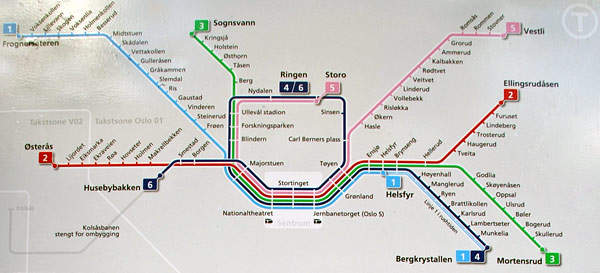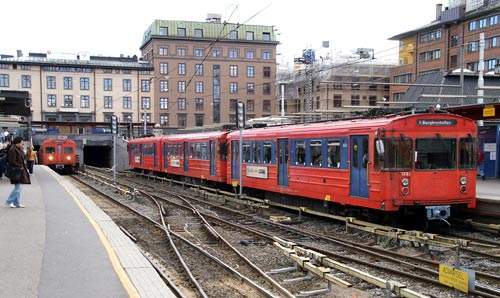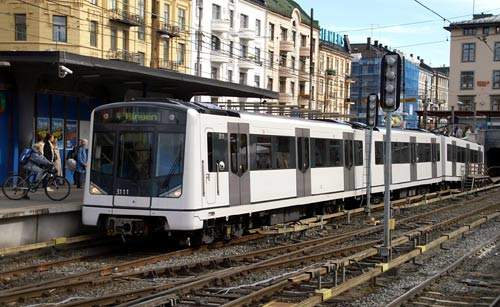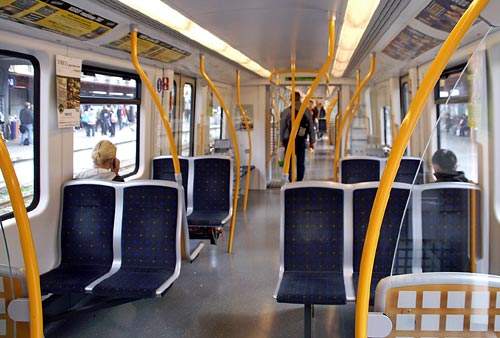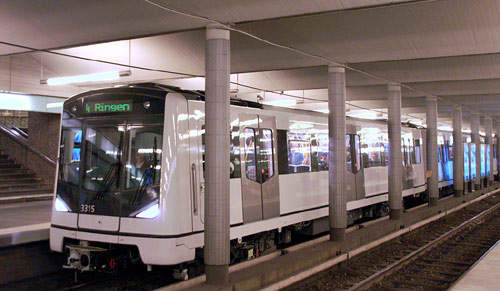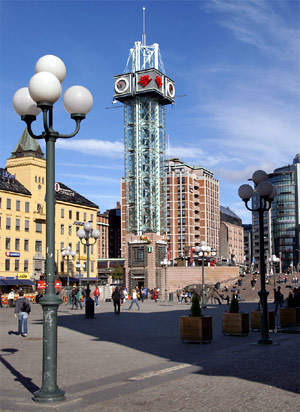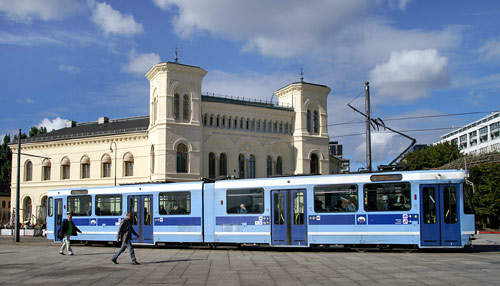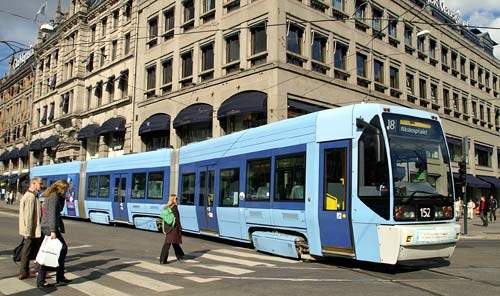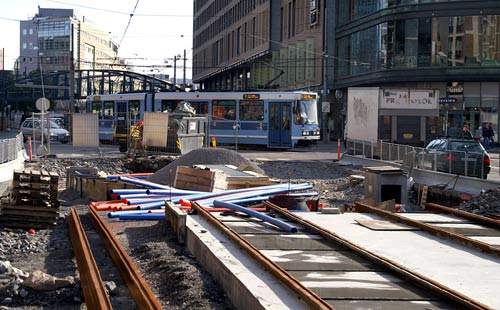By far the largest city in Norway, the capital of Oslo has a high concentration of the national rail infrastructure, notably in respect of servicing local travel needs amongst the metropolitan area’s population of over one million.
Oslo curves around the head of Oslofjord, with rail routes mainly following the coastal strip or valleys leading away from the city centre. Given its relatively small size, Oslo offers a comprehensive public transport system, notably in respect of the multi-line metro.
THE PROJECT
The public sector body responsible for the city’s 384km of public transport routes is AS Oslo Sporveier (‘Sporveien’), within which each mode has its own operating structure.
Covering Metro (T-bane), trams (Trikken), buses and ferries, there are connected broad aims of improving the environment and maximising the amount of journeys around the city being taken on public transport.
The body’s ‘vision towards 2016’ includes that its services are ‘the first choice for the majority of Oslo’s travelling public’.
INFRASTRUCTURE
A metro operation began in 1966, created in stages eastwards from Jernbanetorget, adjoining NSB’s Oslo Sentralstasjon (‘Oslo S’), with some new build and the adoption of existing lines.
Something identifiable as a network was made possible by completion of the city centre tunnel in 1986 (separate from the tunnel west from NSB Oslo S), a link improved by through running from 1993. An intensive service is provided by the several metro routes using this section east from Majorstuen, a former terminus for lines from the west.
Most of the network uses a 750V dc via third rail, with overhead supply on parts of the Holmenkollbanen (Line 1, to the north) and Kolsåsbanen (Line 6, to the west) which have required two-system stock.
The most recent major project was the opening of the metro ring in August 2006, completing a section to the north of the city centre between Carl Berners plass and Storo, following which routes were reorganised.
With a concentration in the city centre but with some lines pushing well into the suburbs, the tramway has origins in the late 19th century. A policy of closures was halted in 1977 and although the system’s continuation again became in doubt, it has survived with some increases to the infrastructure. These include the line by the redeveloped harbour front at Aker Brygge and the Rikshospitalet extension.
The system is a mix of street running and reserved tracks. Compared to many urban systems with several modes, there are relatively few direct interchanges between trams, metro or heavy rail.
ROLLING STOCK
Several series of classes dating from 1966 operate the metro, most with a similar solid styling as per NSB’s long-servicing suburban EMU sets; consequently, some more-recently built vehicles appear older than they are. Like the more modern styled T-2000 units of 1993, some older types have both third rail and overhead current collection equipment.
The largest rolling stock project in recent years is the introduction of the MX3000 metro sets, which will see large-scale replacement of older vehicles. Sporveien and supplier Siemens Transportation make great claims for the environmental soundness of the design, which has links with the V stock developed for the Vienna metro.
Externally styled by the Porsche Design Studio at Zell am See and built in Vienna, there is easy movement for passengers between the three cars of the 54m-long sets. End doors allow for evacuation of passengers in tunnel sections in the event of an emergency. Following use of prototypes to develop the series for use in Oslo – for example, the ability to operate in temperatures down to as little as -25°C – orders have been placed for 63 units.
Delivery started in 2007 and is scheduled for completion by 2010. Equipped for the third-rail system only and with regenerative braking, it is claimed that the MX3000 uses 30% less energy than previous T-bane units, with weight-saving measures including the use of aluminium construction. A target is for 95% of content to be recycled after the expected service life of up to 35 years.
The tram fleet is of two classes, the larger SL79 being a joint product of AEG, Düwag and locally based ABB Strømmen. The single-ended design was ordered following the decision to retain the system. Delivered from 1996, the later double-ended SL95 from Ansaldo/Firema is restricted by its bigger size to specific routes.
SIGNALLING/COMMUNICATIONS
The metro is a self-contained system independent of NSB tracks and has its own signalling system. Information systems are provided aboard vehicles at stations/stops.
Within the city boundary, a common ticketing system covers Oslo Sporveier services of heavy rail operator NSB. There is a prominent Trafikanten office outside Oslo S to provide information and ticketing.
THE FUTURE
Tram services may be extended to the north-eastern community of Tonsenhagen. From 2007, the layout of tram tracks around Oslo S/Jernbanetorget has been undergoing modification, with completion restoring through services on Line18.
The western end of the Kolsåsbanen (T-bane Line 6) beyond Husebybakken is closed for a rebuilding programme for upgrading to metro standards, with phased reopenings due from 2008. There is a plan to add a new station, Homansbyen, between Nationaltheatret and Majorstuen on the central metro tunnel.

